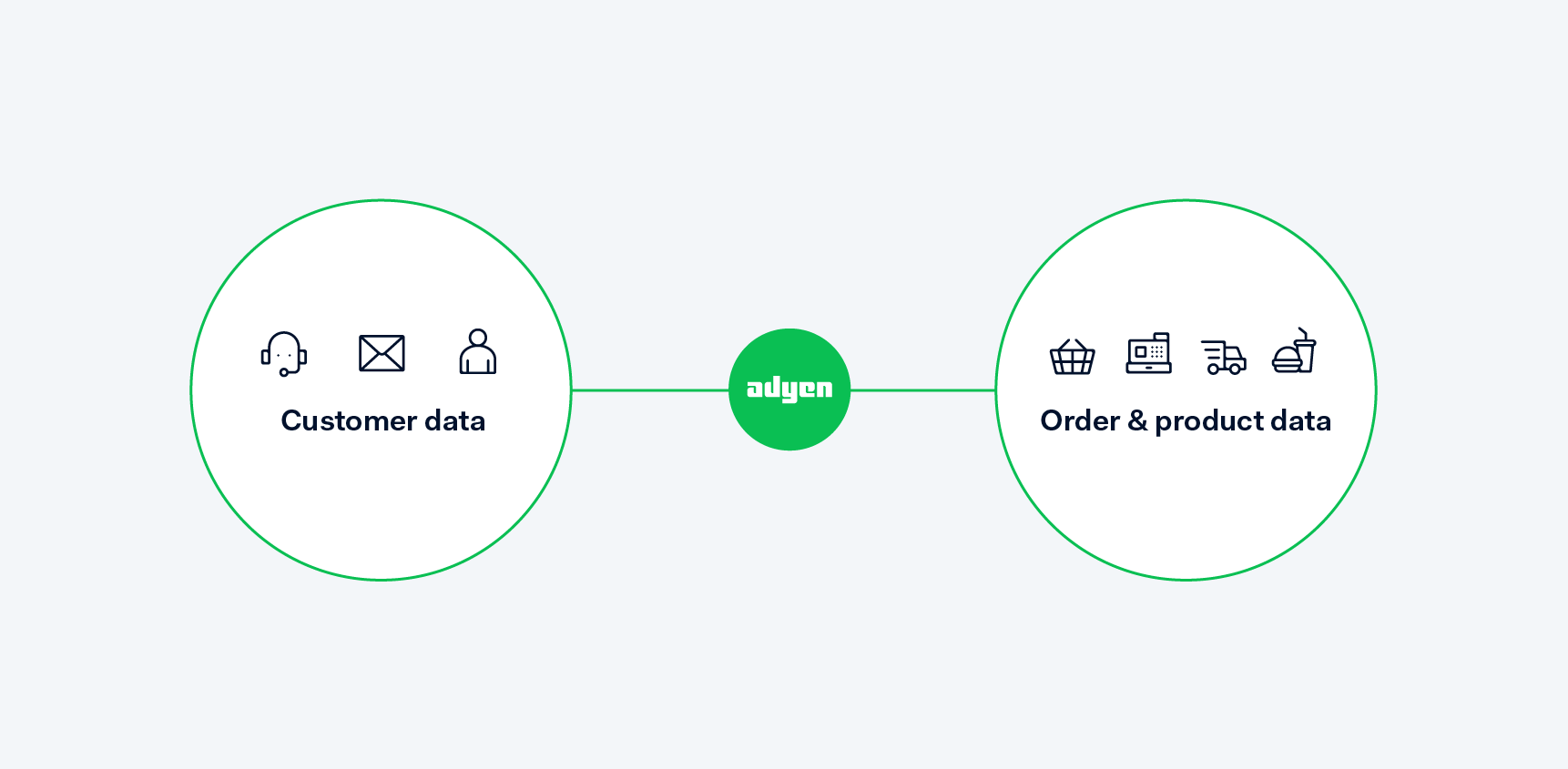Guides and reports
3 ways to understand customers with payments data
How payments data can help you grow your business using real-time research, performance optimization analysis and more.

This article was last updated on March 5, 2020
Using data to create a business strategy is nothing new, but it’s often hard to break down the amount of information that’s available and useful to your business, like understanding your customers better.
Why payments data?
Picture this modern purchase journey:
A customer enters your store, restaurant or hotel. They've bought via your website and in other locations before. Today, they've paid with a credit card, gave an email address to receive their e-receipt and scanned their loyalty card.
It’s simple.
But what happens when a customer forgets to bring their loyalty card and you can’t recognize them at the checkout? By linking earlier transactions made online or in-store, we're still able to help you recognize your customers using the card alias or shopper ID from ourShopperDNAtool.
Now let’s look at how to learn more about customer behavior using payments data.
1. Addressing customer needs with real-time research

It’s hard to know what your customers truly want. Field research and focus groups can help you understand customer segments and how best to position your business or its products. But the problem with these approaches is that they only show a snapshot in time. They’re also costly, take a lot of resources, and the information quickly becomes out of date.
Payments data provides a picture of customers and their purchases in real-time. So you can investigate your customer segments, understand their behavior, and test what works best for them.
A great way to put this real-time data to work is by using the recency, frequency, monetary value (RFM) methodology as a framework. With this, it’s possible to split the customer base to find a frequent visitor segment. Within this segment you can start to analyze the average transaction amount online or on-site, or start to catalogue what behaviors lead to loyalty. Because you’ve now identified your valuable customers you can start to tailor your strategy.
2. Optimizing store performance

There are many ways to measure store performance. Most often it’s based on store size or sales data. With payments data, you can be honest about performance by using richer data.
For example, if you were to analyze a single store’s performance, you could see how many new or returning customers it’s attracting and what level of returns or refunds to expect.
You can also match stores based on a range of performance drivers. Stores with similar performance profiles can be used to A/B test interior layouts, offers, or in-store innovations like self-service kiosks. Stores with different profiles can share learnings such as how to increase spend in fewer visits or differentiate experiences for high traffic sites.
Finding the perfect distance between stores and where to expand your presence is also easy when you use payments data. Delivery addresses from your ecommerce site can help to show where your customer base is. Once you know where you should (and shouldn’t) be opening stores or distribution centres, you can test with pop-ups to make sure you have the right inventory and payment method mix.
Then, when it comes to opening day, you have confidence that the right price point,payment methods, and channels are offered.
3. Use data to keep customers coming back for more

Any marketer will tell you that retaining customers is about surfacing relevant messages in the right place at the right time. This is where unified payments data becomes useful. You can find customers that haven’t shopped with you for a while and apply the right loyalty bonuses, personalized offers, or even survey them. By understanding your returning customers’ sales channel preference, average transaction value and frequency, you know when, what channel, and what price point to use so they’re back shopping with you.
What's next?

Payments data is central to any business and brings actionablecustomer insightsthat can really help you grow your business.
Integrating with the Adyen platform opens up a network of possibilities. For developers there are two ways to consume the data we’ve covered:
1. The first option is to consume the required data points back in the additionalData container on the API response. For point of sale (POS) solutions, this implies that the data will flow via the POS system, and could require an update on the POS-side.
2. The second option to consume the required data is via notifications. This requires the business to set up a dedicated server and endpoint to which notifications can be sent.
The insights we’ve covered in this article can be extracted from our data, and the more sales channels connected with us, the more complete the view of the shopper will be.
Important: Under applicable data protection laws, consent from your shoppers might be required for the above-mentioned use of personal data of your shoppers. We recommend consulting your legal or privacy department to help you out with these GDPR matters. If you have any questions about how data can be consumed and what technical solution would work best in your situation, please reach out to our support team. For the docs and to set up notifications, see paymentsapi documentationandset up notifications.
Fresh insights, straight to your inbox
By submitting your information you confirm that you have read Adyen's Privacy Policy and agree to the use of your data in all Adyen communications.